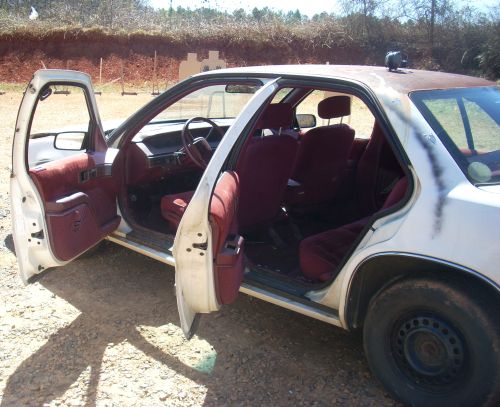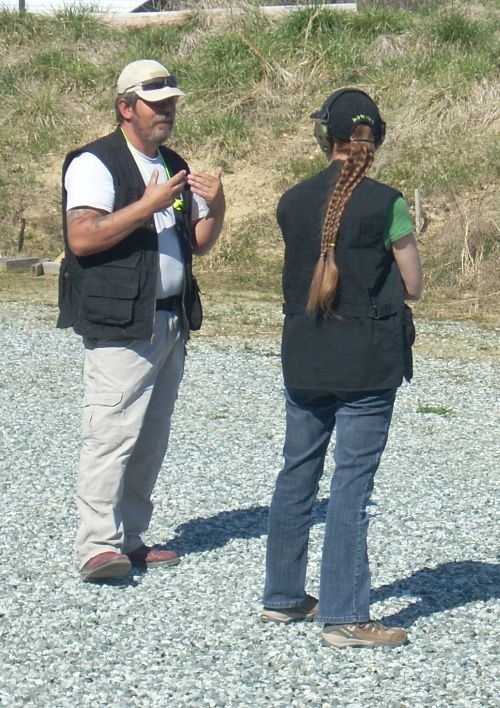I don’t read many other gun blogs because I’m trying to get out and shoot, not sit in front of a computer nearly as much as I have. But there are a few I read. And every once in awhile I read an article that leaves me thinking “I would never have thought about that”. Recently there were two defense related articles that made me think about all the things I don’t know about defensive shooting. Maybe reading blogs can be more helpful than I realized.
The simple one that really made me go “duh” was from Kathy Jackson at the Cornered Cat: Squib. The point of the article is that your behavior should be very different on a practice range than it should be in a defensive situation, if you actually notice the issue during the adrenaline dump of a defensive situation.

From a recent match at The Range in Oxford: the entire stage was shot from the back seat of this car
The more complicated post that made me realize that I have put much too little thought into defensive scenarios was by Ron Larimer at When the Balloon Goes Up!. The post is “Developing mental notecards” and lays out a flowchart scenario of options if you were in a bad situation in your car. My background is programming and I like the flowchart approach – but more than that it made me consider situations that never crossed my mind:
- Not blocked in? If not, drive away. Always remember that your 1st choice is to leave.
- Am I alone? My default situation is to be driving alone, but that isn’t always the case and I shouldn’t let that be a “how the heck to I deal with a passenger” situation. “Get down and cover your ears!” gives them a chance to limit damage if I shoot.
- Think about the seat belt and how that may impede you.
- How does the location of the threat affect use of the car for cover?
Here’s where shooting matches has helped:
- Have you ever tried to draw in a car? I have at the local IDPA match. I’m so glad to have had that experience. That is very valuable practice. Below is the set of targets shot from the backseat of the car shown above:


